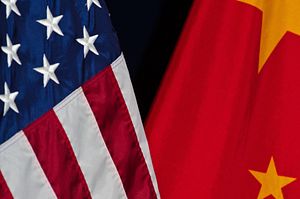The highly anticipated summit between Chinese President Xi Jinping and his U.S. counterpart Donald Trump has been officially confirmed by the Chinese government, thus raising important questions about what to expect from the summit and regarding the future of U.S.-China relations in general. Given what has happened since Trump’s taking office on January 20, 2017, things are looking rather positive in U.S.-China relations. For example, when U.S. Secretary of State Rex Tillerson visited Beijing in March, the tone of his remarks was strikingly similar to what China had been advocating for in the last six years, i.e., the new type of major power relations concept. Tillerson’s remarks, not surprisingly, caused some domestic backlash in the U.S., where analysts criticized him for conceding too much to China by borrowing from China’s narrative and language.
Regardless of the merits of such criticisms, we can expect a positive Xi-Trump summit if Tillerson’s remarks in Beijing to some degree reflected what the Trump administration has been thinking about U.S.-China relations in a global context. There is good reason to believe that Tillerson did not speak on his own behalf. Another senior U.S. governmental official, Acting Assistant Secretary of State Susan Thornton, in a preview of Tillerson’s Asia trip emphasized that the previous “pivot” or “rebalance” approach was over. What the Trump administration wants to develop in U.S.-China relations is a “results oriented” approach, which puts the emphasis on concrete results in an environment of mutual respect and mutual cooperation.
If this approach holds, then we can expect some concrete results of cooperation from the Xi-Trump summit next week in Florida. The likely list of outcomes would include deals in trade, investment, and possibly North Korea, as the hermit kingdom continuously challenges both the U.S. and China’s national interests.
From China’s perspective, however, the most important issue is likely to be how China and the U.S. can work together to define the nature of a changing U.S.-China relationship. Without an appropriate name or term that clearly defines the U.S.-China relationship, many obstacles will hinder the relationship from reaching a higher level. So the key question is: what kind of relationship is the U.S.-China bilateral? Are they friends? Foes? Or partners?
The good news is that the U.S. and China are not foes despite all their differences and some competition. Yet they are not exactly friends in a usual sense. The U.S. and China are partners when it comes to many global and regional issues, but this partnership is fragile as it is constrained by domestic issues at home for both countries. The challenge for Xi and Trump now is to find a way to minimize their differences while working hard to achieve a more mature and stable partnership between the two major powers.
Such a project will not be easy, of course. When it comes to global affairs, China needs to take on more international responsibilities and behave like a global leader. Some of this is evidenced by its leading role in the Asian Infrastructure Investment Bank and the new round of globalization. China has also demonstrated global leadership in continuously pushing for a global climate change deal. In the meantime, the U.S. needs to slightly withdraw from its overstretched global obligations to focus more on domestic issues such as income inequality and so on. In a word, China needs to look more to the outside whereas the U.S. needs to look more toward the inside.
As long as the U.S. and China can work together and craft a framework within which their global obligations and domestic duties are well balanced, the whole world will become more peaceful and prosperous. The upcoming Xi-Trump summit provides exactly such an opportunity. Let us hope the two leaders can be bold and seize this opportunity to advance the U.S.-China relationship to a higher level.

































